Find out more about Guyana's wildlife and plan your next trip with our virtual travel guide.
Where is Guyana?
Found on South America’s North Atlantic coast, Guyana is a small country which is home to dense rainforest and an incredible variety of wildlife species. It is home to 18% of the world's tropical forests, and was a huge diversity of wildlife, including over 800 bird species and 225 mammal species.
Slightly smaller than the UK, Guyana is the only country in South America where English is the official language.
Kaieteur National Park

Established in 1929, Kaieteur National Park is the only national park in Guyana, measuring 628 square kilometres in size, and is located in the Potaro-Siparuni Region of Guyana
Kaieteur Falls is the largest single drop waterfall in the world, and is four times the height of Niagara Falls and twice the height of Victoria Falls. Three species of swift roost on the cliff behind the cascading waters.
In Lost Land of the Jaguar, Steve Backshall abseiled down Kaieteur Falls.
Please note that external videos may contain ads:
The golden rocket frog (Anomaloglossus beebei), also known as Beebe's rocket frog, was thought to be endemic to Kaieteur but has since been found on Mount Ayanganna and Mount Wokomung (both in Guyana and near to Kaieteur).
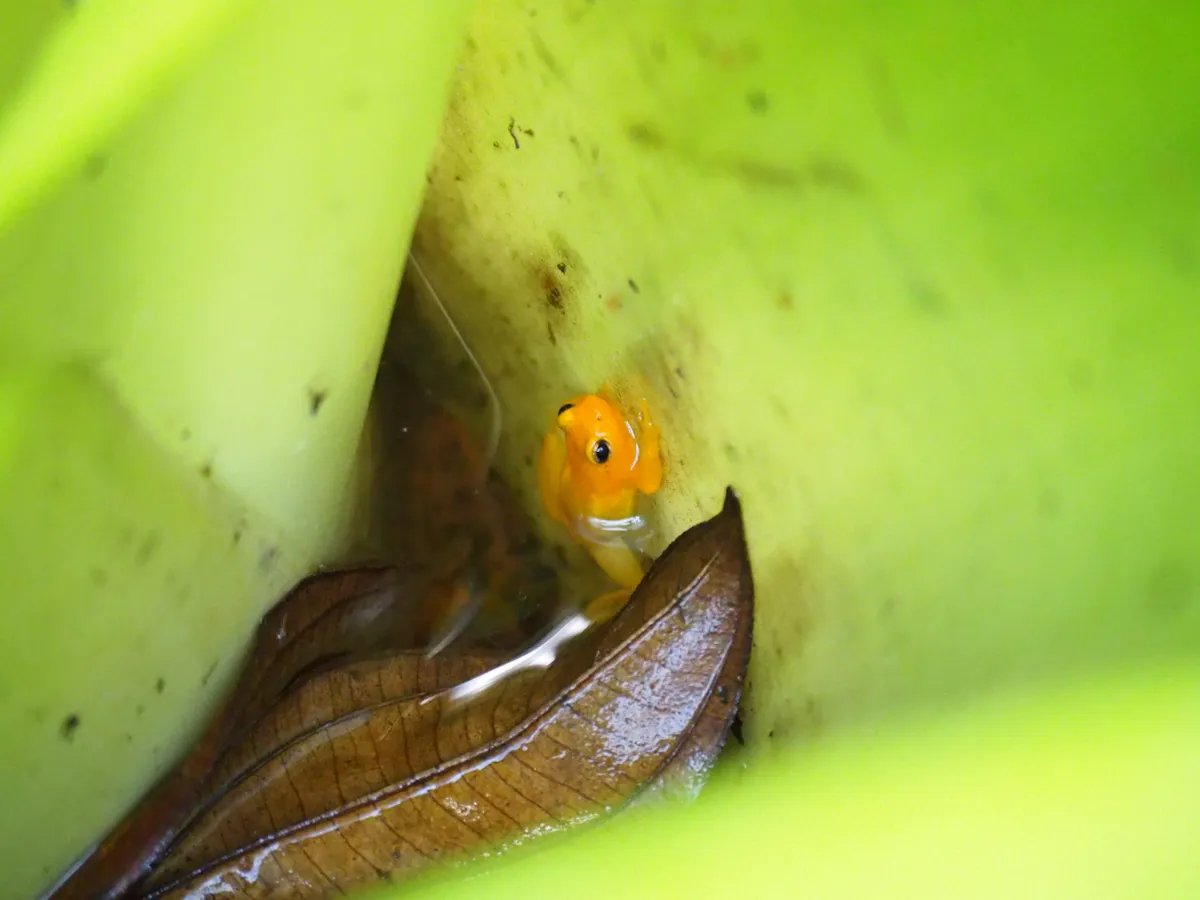
The frog lives its whole life within the giant tank bromeliads (Brocchinia micrantha), and some other smaller bromeliad species. The species is listed as Endangered on the IUCN Red List.
Kaieteur is one of the best locations to see the Guianan cock-of-the-rock (Rupicola rupicola). The male bird is a startling bright orange bird, with a crest that comes over its orange bill. The female bird is grey-brown in colour, with a smaller crest.
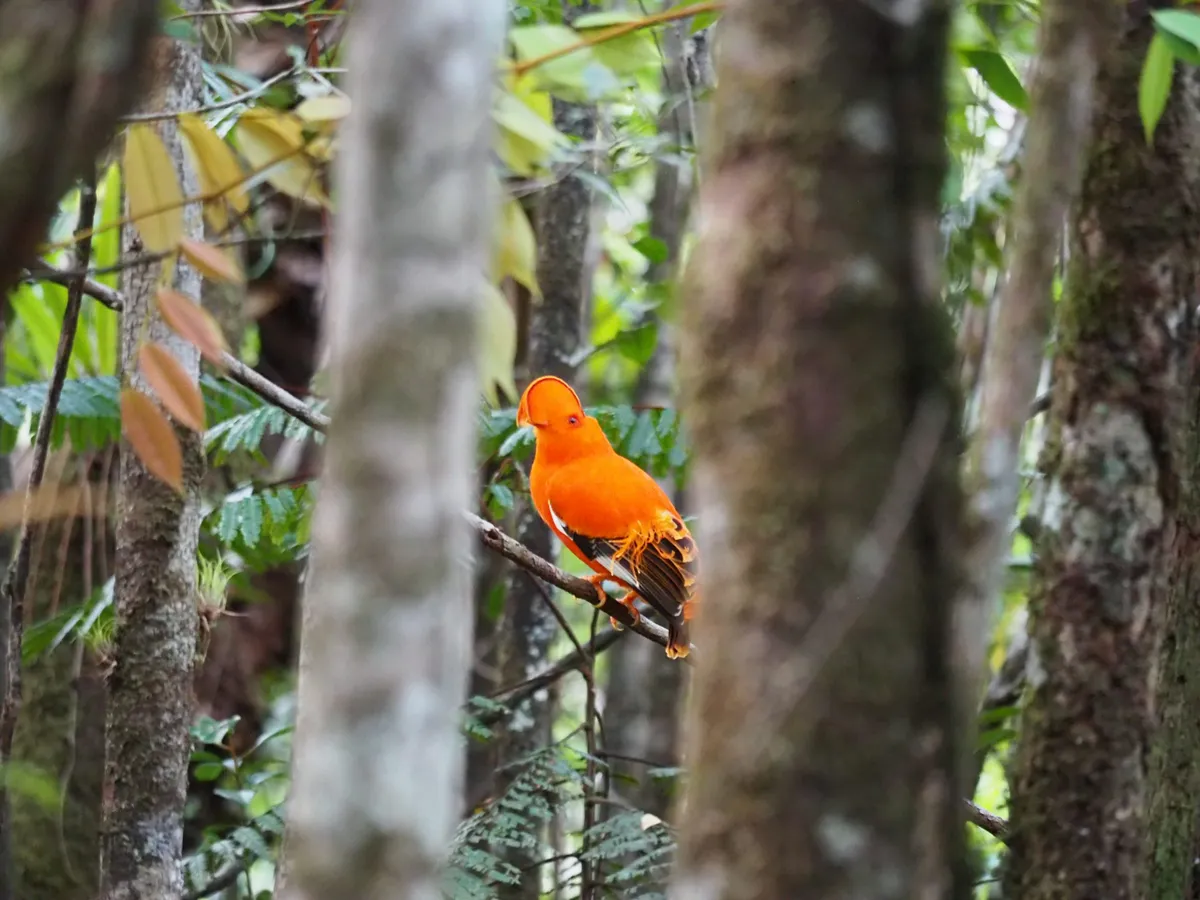
Wildlife to spot in Guyana
With over 1,000 species of birds and mammals, there's a huge variety of species to be seen in Guyana. Many are elusive, but local guides are experts at finding and spotting them.
Jaguar (Panthera onca)
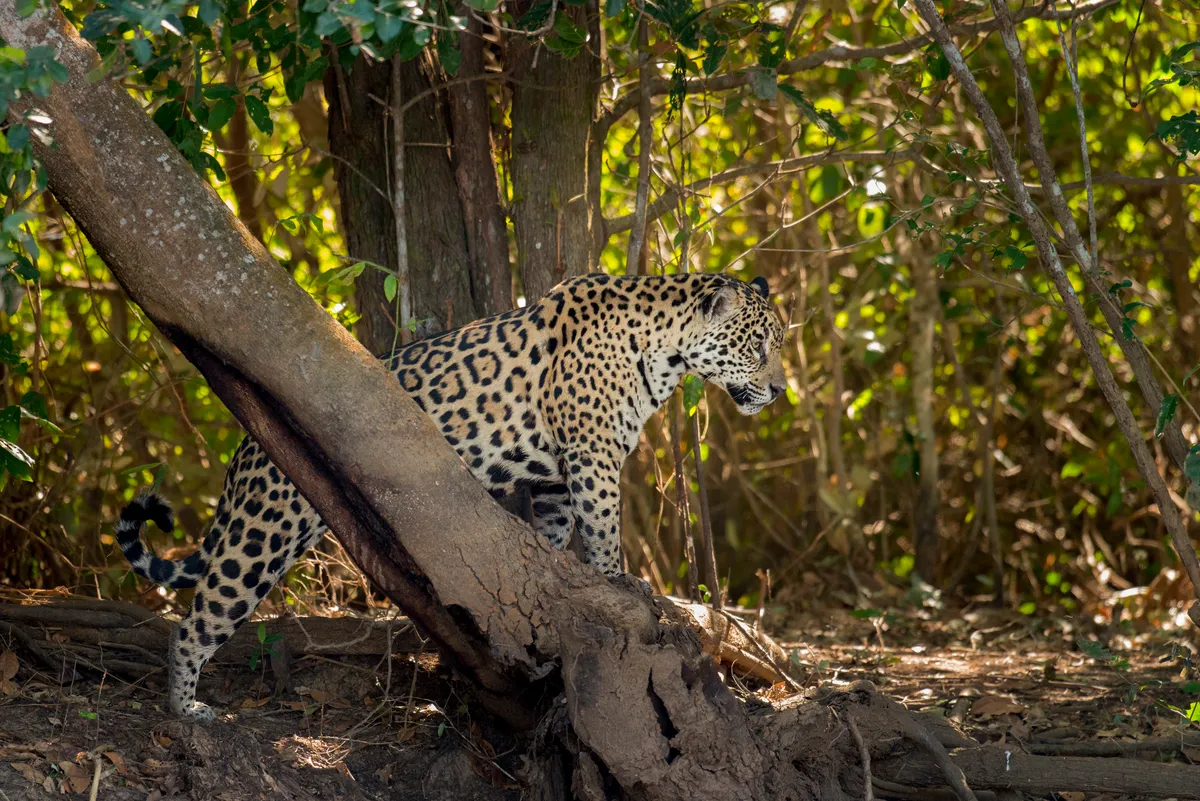
The jaguar is an elusive predator of the forest, and is the largest cat in the Americas and the third-largest in the world (after the lion and tiger). Its head-body length can reach around 240cm, and its shoulder height up to 75cm.
A jaguar’s bite force is only three-quarters as strong as a tiger’s bite force, however they have the greatest bite force relative to their size, and are able to pierce skulls, and even the tough hide of caiman.
Steve Backshall met a rescued jaguar in Brazil in Deadly 60.
Please note that external videos may contain ads:
Harpy eagle (Harpia harpyja)

Harpy eagles are legendary birds named after the harpies of Greek mythology, and inspired the design of Fawkes in the Harry Potter series. They are the largest raptor in the Americas.
In Deadly 60, Steve Backshall filmed a female harpy eagle on her nest:
Please note that external videos may contain ads:
Arapaima (Arapaima spp.)

Arapaima are the world's largest freshwater scaled fish, growing up to three metres in length and weighing up to 200kg. It's thought that there are at least five different species of arapaima, but taxonomic work continues and experts believe there may be more.
The diet of arapaima mainly consists of fish, though they are known to also feed on crustaceans, insects and fruit. They are even known to catch unwary land mammals or birds that come too close.
For centuries, arapaima have been a valuable source of food for people, caught either via a handline or shot with a bow and arrow. As they can grow so large, a single fish can provide six to eight slabs of meat.
It is now illegal to catch and kill arapaima, and instead some eco lodges invite keen anglers to test their skills in catching the fish using lures and then releasing them back into the ox bow lakes.
By conserving the arapaima and generating an income for indigenous villages, other wildlife such as caiman and giant otters also benefit.
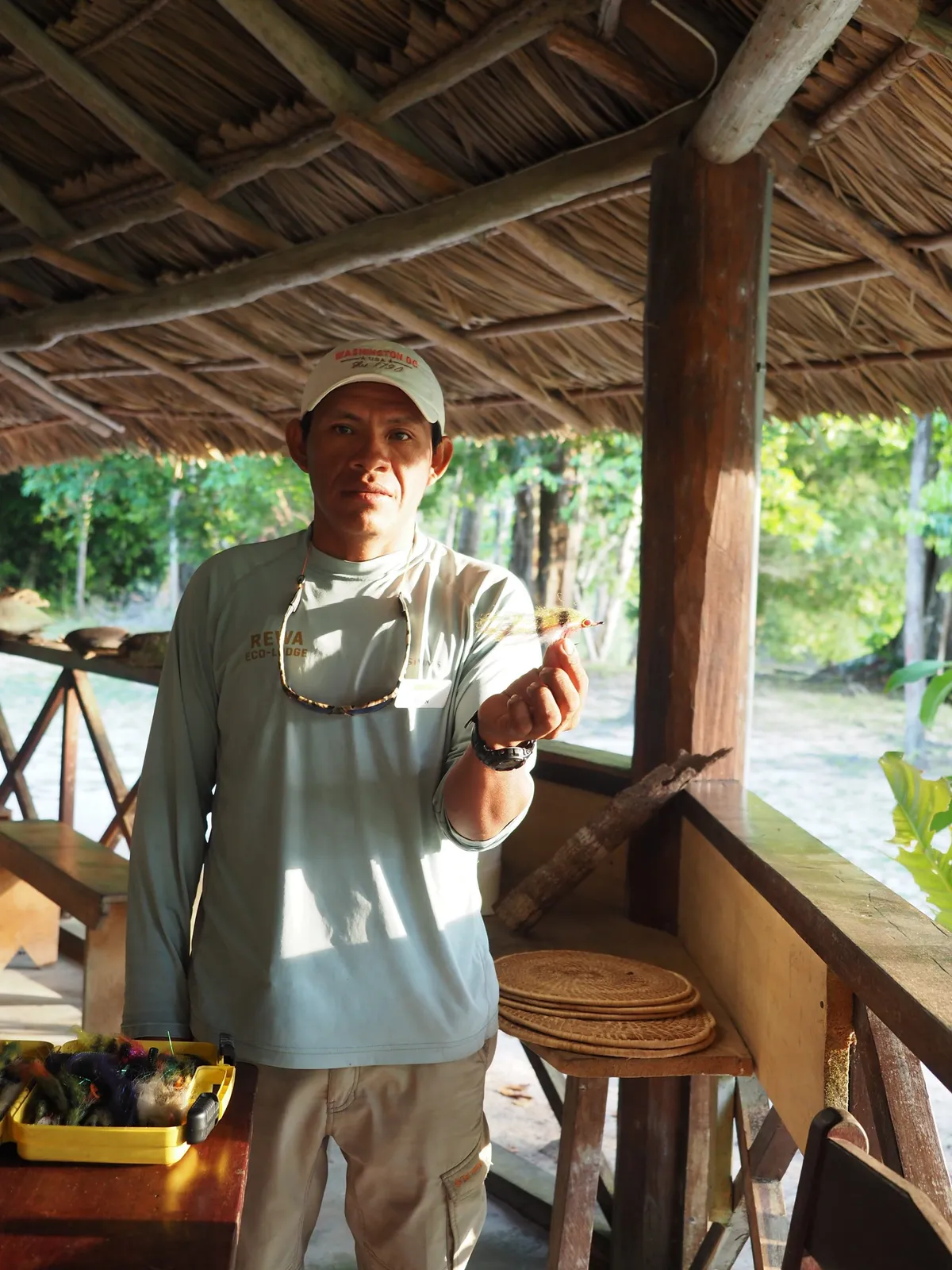
Giant otter (Pteronura brasiliensis)

Giant otters hunt in the oxbow lakes and rivers, sticking together in family groups of up to 20 individuals. Female normally give birth to between one and three cubs.
Their main prey is fish, but they’ve been known to predate anacondas, piranhas and caiman too.
They can grow up to 1.8 metres in length, double the length of the world’s smallest otter, the Asian short-clawed otter.
Giant otters are listed as Endangered on the IUCN Red List, and were last assessed in June 2014. The species is threatened by habitat contamination and degradation, overfishing of their prey and conflicts with fishermen, infrastructure such as roads and hydroelectric dams, and climate change.
Charlie Hamilton-James filmed a family of otters teaching their cubs to swim for the BBC:
Please note that external videos may contain ads:
The BBC's Wild Brazil programme included footage of a giant otter family killing a caiman:
Please note that external videos may contain ads:
Related content:
Green anaconda (Eunectes murinus)
Green anacondas are a non-venomous boa species and are one of the heaviest and largest known snakes in the world, with the females typically growing larger than males.
The BBC filmed a female anaconda giving birth to live young underwater:
Please note that external videos may contain ads:
Giant anteater (Myrmecophaga tridactyla)

As its name suggests, the giant anteater is largest the four anteater species, reaching up to two metres in length. On their hind legs, giant anteaters are taller than a grown man.
Anteaters primarily eat ants and termites – up to 30,000 a day. They detect ant and termite nests via smell, and then use their sharp claws to rip them open. As the anteaters don't have any teeth, they use their sticky tongue to pick up the ants and termites.
Related content:
Goliath bird-eating spider (Theraphosa blondi)
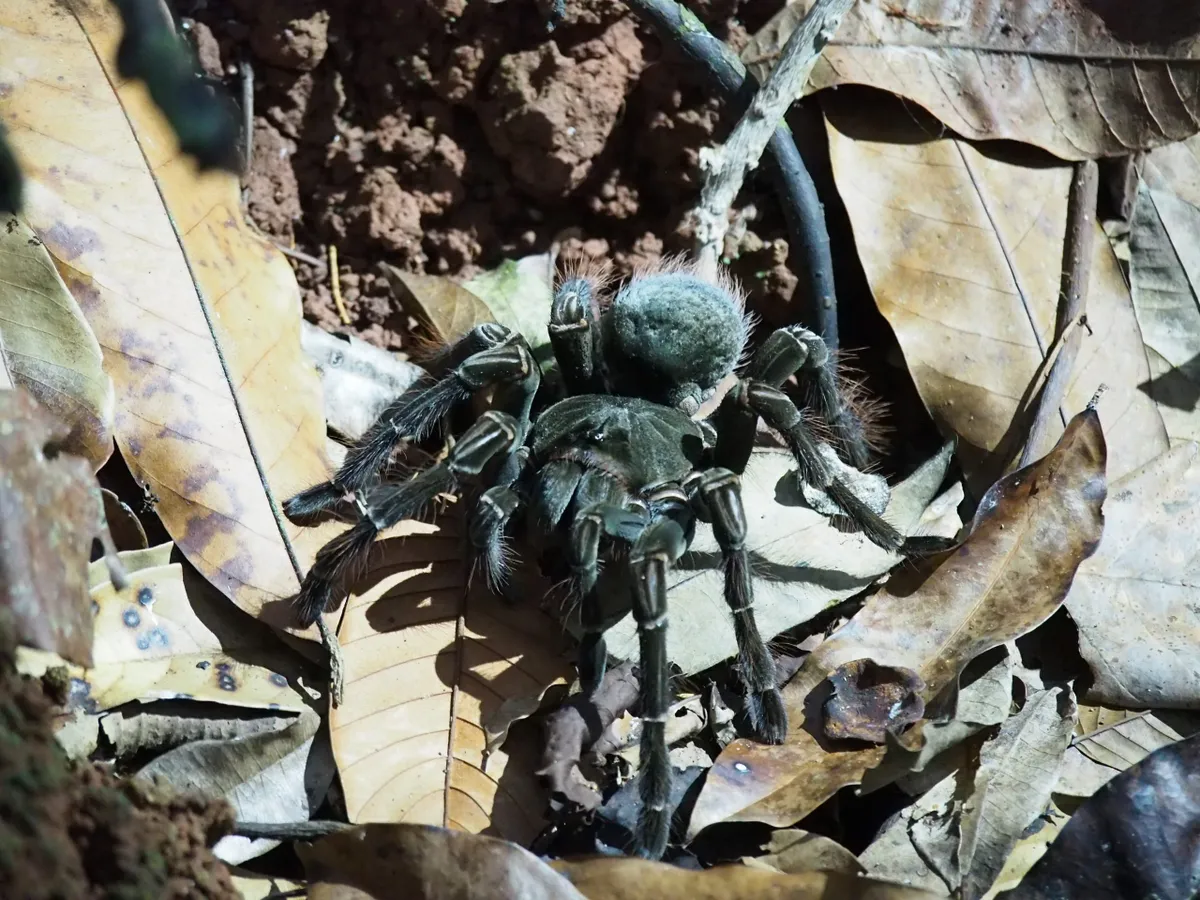
Goliath bird eating spiders are partially misnamed as they don’t usually eat birds. However, they are certainly large enough to, with a legspan of up to 30cm.
Goliath bird-eating spiders featured in Lost Land of the Jaguar.
Please note that external videos may contain ads:
Main image: A habituated giant otter in Guyana. © Danita Delimont/Getty
Megan Shersby travelled to Guyana courtesy of the Guyana Tourism Authority.
